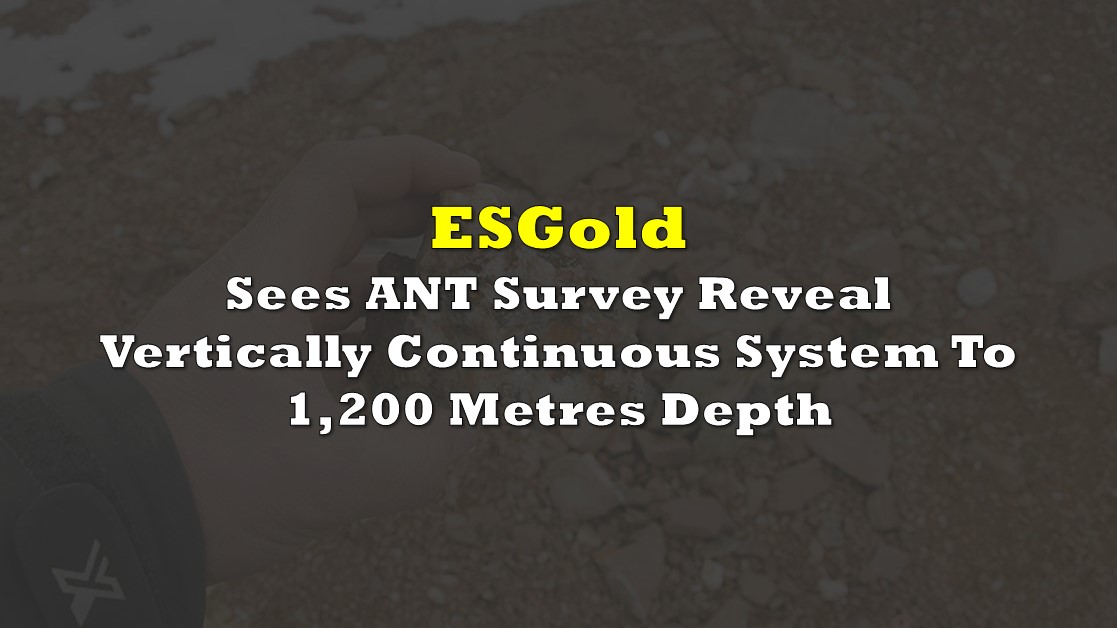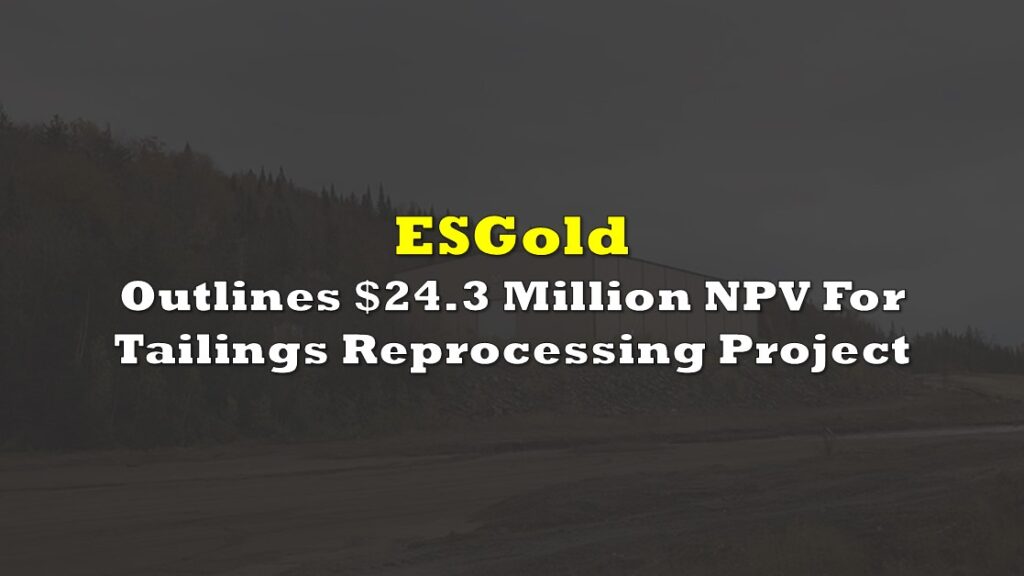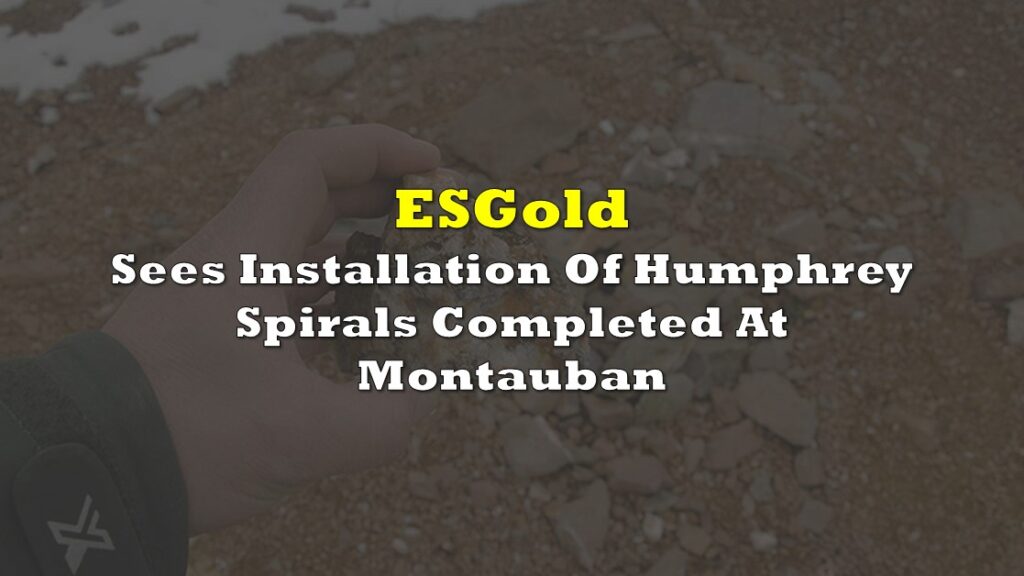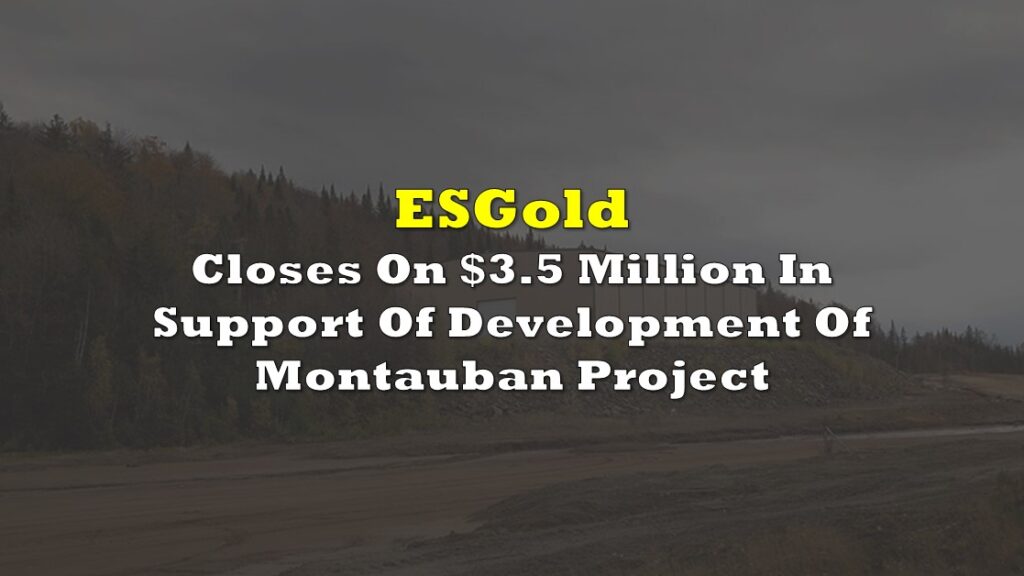FULL DISCLOSURE: ESGold Corp is a sponsor of theDeepDive.ca.
ESGold Corp (CSE: ESAU) on Friday released the results of a recently completed ambient noise tomography survey. The survey, conducted at the Montauban Gold-Silver project in Quebec, is said to have identified multiple deep-seated geological structures based on a preliminary interpretation.
The survey results are said to suggest that the Montauban system may extend beyond previously mined zones, with the potential existing for a district scale system. The survey provided images as deep as 1,200 metres, which revealed a vertically extensive and laterally continuous geological system, suggesting that rather than a single deposit, Montauban may represent a district scale VMS system.
Deep seated structural zones were identified by the survey, which have the potential to host stacked mineralized lenses, which suggests a clustered VMS system may exist on site. Parallels here have been drawn to Sweden’s Skellefte district, which contains over 85 known deposits and has produced 97 million tonnes of ore from 26 volcanic hosted massive sulphide deposits.
The ANT survey is also said to have identified several potential targets, with a strong contrast existing between the high velocity basement in the north and the structural complex domains in the southern regions. The survey is now in the process of being combined with historical assays and data from a VTEM survey to establish a 3D model to identify discovery zones.
WATCH: The Goal is Gold Production as Soon as Possible! | Gordon Robb – ESGOLD Corp.
“We now believe Montauban may be far more than a single deposit — it is emerging as a deep, district-scale system with possible structural and geological continuity. These results may place Montauban into a new category of exploration potential. Where previous generations saw a series of shallow pods, we now see the signature of a vertically integrated mineral system — potentially with stacked, repeating lenses akin to those in VMS system or Broken Hill-style districts. We’re seeing signatures that resemble the structural architecture of globally significant systems, but we are still in the early stage of exploration,” commented Andre Gauthier, Director of ESGold.
The survey overall was conducted across ten square kilometres on the Montauban property, with a total of 105 triaxial sensors continuously recording data over a 49 day period. The survey identified four key depth domains, with the 0-300 metre level containing low velocity fractured rock consistent with historical mining zones and weathered overburden.
The 300-900 metre level was identified as a transitional zone with the potential to host additional unmined mineralized horizons. From 900 to 1,200 metres depth, a corridor of crystalline basement or structurally competent feeder host was identified. Beyond 1,200 metres vertically extensive, pipe-like domains were identified in the northern half, which suggest possible feeder conduits or high grade remobilization corridors, while results in the southern half suggest repeated mineralized lenses.
“This survey has fundamentally changed the way we understand this special deposit. The continuity, depth, and scale of the structures we’re seeing suggest that the original mine was just the tip of the iceberg. As we build toward production from the tailings, we’re simultaneously unlocking the blue-sky potential beneath. This data confirms Montauban may be just the first chapter in a much larger district-scale opportunity, and we’re excited to share that story with the world,” commented Gordon Robb, CEO of ESGold.
ESGold last traded at $1.26 on the CSE.
FULL DISCLOSURE: ESGold Corp is a client of Canacom Group, the parent company of The Deep Dive. Canacom Group is long the equity of ESGold Corp. The author has been compensated to cover ESGold Corp on The Deep Dive, with The Deep Dive having full editorial control. Not a recommendation to buy or sell. Always do additional research and consult a professional before purchasing a security.









